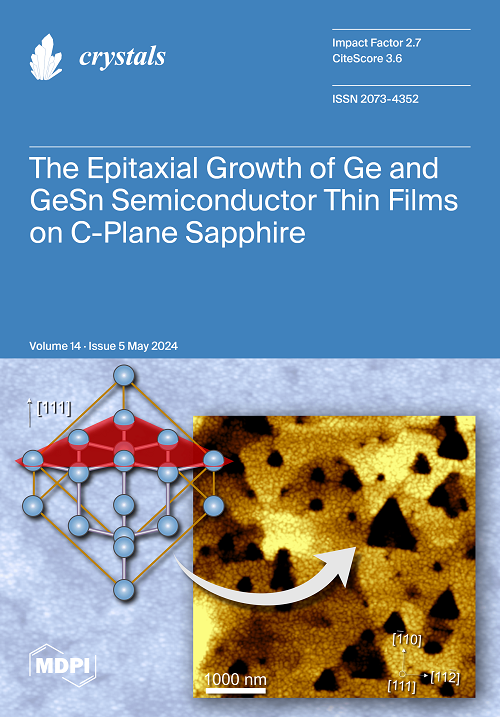Localized Structural and Electronic Perturbations Induced by Mono-Vacancy in MgH2: A Comprehensive First-Principles Investigation
IF 2.4
4区 材料科学
Q2 CRYSTALLOGRAPHY
引用次数: 0
Abstract
In the pursuit of sustainable energy, magnesium hydride (MgH2) stands out as a promising candidate for hydrogen storage due to its high capacity. Nevertheless, its high thermodynamic stability necessitates elevated operating temperatures, thereby hindering practical applications. To mitigate this limitation, our study employs a defect engineering approach by introducing a mono-vacancy to decrease its thermodynamic stability. Utilizing first-principles density functional theory calculations, we investigate the influence of a mono-vacancy on the structural and electronic properties of MgH2 crystal. Introducing the defect results in a 0.57% contraction of the a/b lattice parameters and a 1.03% expansion along the c-axis, causing lattice distortion. Electronically, the band gap narrows by 0.67 eV, indicating an increase in metallic character. We observe a distinct vacancy-affected zone, characterized by substantial alterations in electron density within a 26.505 Å3 volume and modifications to the potential energy distribution encompassing a 19.514 Å3 volume. The mono-vacancy enhances the polarity of the Mg-H bonds and maximally decreases the bond energy by 0.065 eV. A localized high-energy region of 0.354 eV emerges, functioning as an energy barrier to atomic diffusion. This energy barrier is encompassed by low-energy pathways, potentially facilitating H atom migration within the MgH2 crystal.MgH2 单空位诱发的局部结构和电子扰动:全面的第一性原理研究
在追求可持续能源的过程中,氢化镁(MgH2)因其高容量而成为储氢的理想候选材料。然而,其较高的热力学稳定性要求较高的工作温度,从而阻碍了其实际应用。为了缓解这一限制,我们的研究采用了缺陷工程方法,通过引入单空位来降低其热力学稳定性。利用第一原理密度泛函理论计算,我们研究了单空位对 MgH2 晶体结构和电子特性的影响。缺陷的引入导致 a/b 晶格参数收缩 0.57%,沿 c 轴膨胀 1.03%,从而引起晶格畸变。在电子学上,带隙缩小了 0.67 eV,表明金属特性增强。我们观察到一个明显的空位影响区,其特点是 26.505 Å3 体积内的电子密度发生了重大变化,19.514 Å3 体积内的势能分布也发生了变化。单空位增强了 Mg-H 键的极性,最大程度地降低了键能 0.065 eV。出现了一个 0.354 eV 的局部高能区域,作为原子扩散的能量屏障。这一能量障碍被低能量路径所覆盖,有可能促进 H 原子在 MgH2 晶体内的迁移。
本文章由计算机程序翻译,如有差异,请以英文原文为准。
求助全文
约1分钟内获得全文
求助全文
来源期刊

Crystals
CRYSTALLOGRAPHYMATERIALS SCIENCE, MULTIDIS-MATERIALS SCIENCE, MULTIDISCIPLINARY
CiteScore
4.20
自引率
11.10%
发文量
1527
审稿时长
16.12 days
期刊介绍:
Crystals (ISSN 2073-4352) is an open access journal that covers all aspects of crystalline material research. Crystals can act as a reference, and as a publication resource, to the community. It publishes reviews, regular research articles, and short communications. Our aim is to encourage scientists to publish their experimental and theoretical results in as much detail as possible. Therefore, there is no restriction on article length. Full experimental details must be provided to enable the results to be reproduced. Crystals provides a forum for the advancement of our understanding of the nucleation, growth, processing, and characterization of crystalline materials. Their mechanical, chemical, electronic, magnetic, and optical properties, and their diverse applications, are all considered to be of importance.
 求助内容:
求助内容: 应助结果提醒方式:
应助结果提醒方式:


